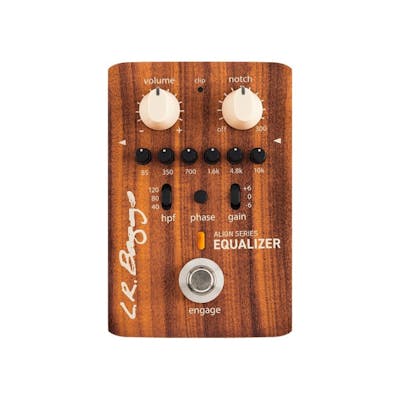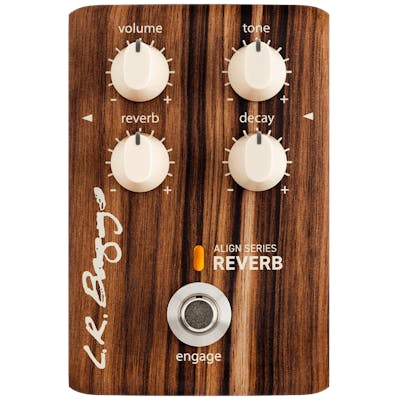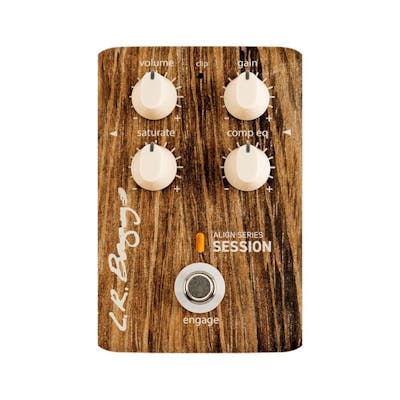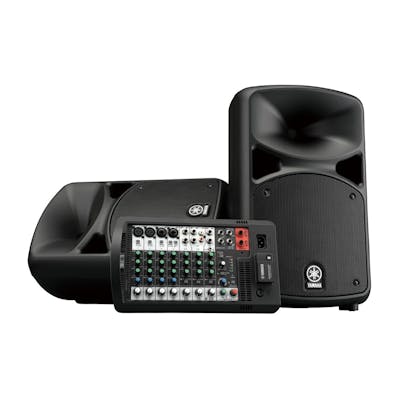It’s funny, but acoustic guitars are fairly synonymous with the term ‘unplugged’. Whether you’ve seen footage of Kurt Cobain strumming his Martin D-18E at Nirvana’s legendary MTV Unplugged performance, or been present at any gig where an acoustic guitar is being played, in most instances they will be plugged in and amplified.
Of course, this only really applies to electro-acoustic guitars. If you’re unfamiliar with electro-acoustic guitars, they are fundamentally the same as regular acoustics, however they feature discrete built-in pickups. A pickup basically captures the vibrations of the strings when they are played, which is turned into an electrical signal.
This signal is then transferred through a guitar cable into an amp or a sound system, similar to electric guitars. However, acoustic guitars cannot be plugged into regular guitar amps; they’ll just sound bad! Instead, certain companies produce dedicated acoustic guitar amps that are made specifically for them. But that’s not the only option, as acoustic guitars can also be plugged directly into PA systems too.
So in this article, we’re going to help you identify which approach is best for you when it comes to amplifying your acoustic guitar. Whether you’re a backing acoustic player or a fully-fledged singer-songwriter, you’ll discover why the right choice could take your music to a whole new level!
What is an acoustic guitar amp?
Acoustic guitar amplifiers are similar to electric guitar amps in terms of their purpose. But when it comes to how they sound, they are a lot different. Instead, an acoustic amplifier will be optimised to the tonal qualities of your electro-acoustic guitar’s pickup system.
This is so that the character of your acoustic is translated well to your audience, for more authenticity. Therefore, an acoustic guitar amp can enhance the tone of your instrument. For example, if your electro-acoustic has a fairly anaemic-sounding pickup, an acoustic amp can really spruce up its tone.
One of the main ways to do this is via EQ. Like their electric counterparts, acoustic amplifiers will typically feature an EQ section. This allows you to boost and cut key frequencies in your guitar’s spectrum of sound. Ultimately, this is so that you can tailor its tone to suit a particular venue or space. For example, if your electro-acoustic projects a thin sound, you can compensate by boosting the lows on the amp. This will give a more natural sound and an improved frequency response.
Acoustic amplification is therefore great for giving you direct control over your sound. But it doesn’t end there. You’ll also find that many acoustic amps will feature a second channel with an XLR mic input. This means that you can use one channel for your acoustic, with the second available for your vocals or another instrument.
Some of the best acoustic amps will also boast built-in effects, such as reverb and chorus. Reverb adds ambience to your sound, to give it space, warmth and character. Chorus is a modulation effect, that can make your acoustic sound almost like a 12-string guitar. Effects like this can really embellish your overall sound, for a more professional and studio-esque vibe.

Why should I buy an acoustic guitar amp?
From those main qualities that we’ve identified, an acoustic guitar may sound like an appealing choice. They are great for smaller pub gigs, where pure volume isn’t such a factor but quality of sound is. Control is therefore their main benefit, as they give you more flexibility than PA systems, which aren’t optimised to any particular instrument.
Having said that, the majority of acoustic guitar amps will feature a DI output, which means that you can plug them into a PA system if you need to. This means that you can still easily get a consistent and malleable sound, while projecting more volume to fill a larger venue.
Many acoustic guitar amps are also quite portable and compact, making them fairly easy to carry. AER acoustic amps are highly-regarded, with their Compact 60 model a firm favourite amongst players. Marshall acoustic amps are also popular, thanks to their affordability and broad feature-set.
But if you want to avoid lugging around both your guitar and an amp, especially if you rely on public transport, the temptation to trust that a venue’s PA system is good might be the difference between buying one or not. Speaking of PA systems, that brings us nicely onto the next section…
What is a PA system?
A PA system is a set of high-wattage speakers that amplify the sound of one or more instruments. Standing for ‘public address’, PA systems are used to project audio that can fill medium to large spaces, from function rooms to stadiums. Frankly, PA systems are everywhere, and ultimately they are employed to deliver high-quality sound to an audience.
While acoustic amps are fairly specific, PA systems can come in all shapes and sizes. From compact systems all the way up to comprehensive multi-speaker and subwoofer PA system packages, most traditional PA systems are formed from two speakers, to create a ‘stereo field’. This yields a three-dimensional and immersive sound, giving you the ability to pan instruments left, right or centre.
The panning positions, volumes and EQ settings of instruments run through a PA system are controlled via a mixing console. Usually featuring a number of channels, live mixers will feature mic and ¼” jack inputs for microphones or line-level instruments, like electro-acoustic guitars.
You’ll find that most PA systems will feature active speakers, however a passive PA system will require a separate power amplifier in order to project audio. This is something that you shouldn’t worry about too much, as most modern PA system speakers are active and therefore have their own built-in amplifiers.














Responses & Questions